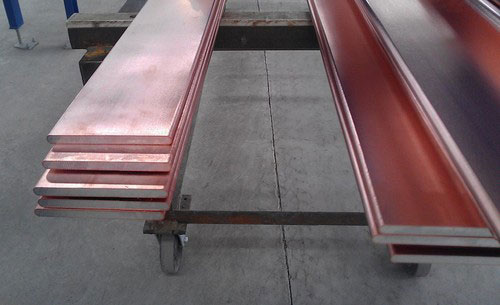Copper clad aluminum busbar is one of our main products,It is usually used in power distribution cabinets and other power equipment,generally T2 copper and 1060 aluminum.
The resistivity and mechanical properties of the copper cladding aluminum are explicitly influenced by the production process.In this study,the drawing process was used to form the even-deformation and high surface quality copper cladding aluminum;with the formed part,the combination mechanism of aluminum and copper was studied by observing the microstructure and analyzing chemical compositions,and the shearing strength of the interface was measured.It can be found that the copper cladding aluminum produced with drawing process has the lower resistivity and high combination strength.
Determination of blank size:
When drawing, the processing rate has a great influence on the mechanical and physical properties of the product, and the total processing rate of drawing directly determines the performance of the product. In order to ensure the mechanical properties, combine the work hardening curves of copper and aluminum to determine the deformation rate, and then determine the blank size according to the finished product size and deformation rate.
When assigning pass elongation coefficients based on the empirical method, the chilling rate of the metal, the original structure, the state and dimensional tolerances of the blanks, and the accuracy and quality of the finished product should be considered. For pure copper, pure aluminum and other materials with good plasticity and slow chilling rate, the middle drawing pass should be given a larger extension coefficient, and the last pass should be given a smaller extension coefficient, which is conducive to precise control of the product size tolerance. The extension coefficient of the middle pass is about 1.2~1.5; the extension coefficient of the last pass is about 1.10~1.20.
Design of profile die hole and die section parameters:
The key to designing the profile drawing mold is to minimize the unevenness of deformation. According to the design principle of the profile die hole, the profile die hole is designed in combination with the deformation rate of each pass; and according to the relationship between the pass processing rate and the best die angle, Determine the processing die angle of each pass, and then determine the cross-sectional size of each pass.
